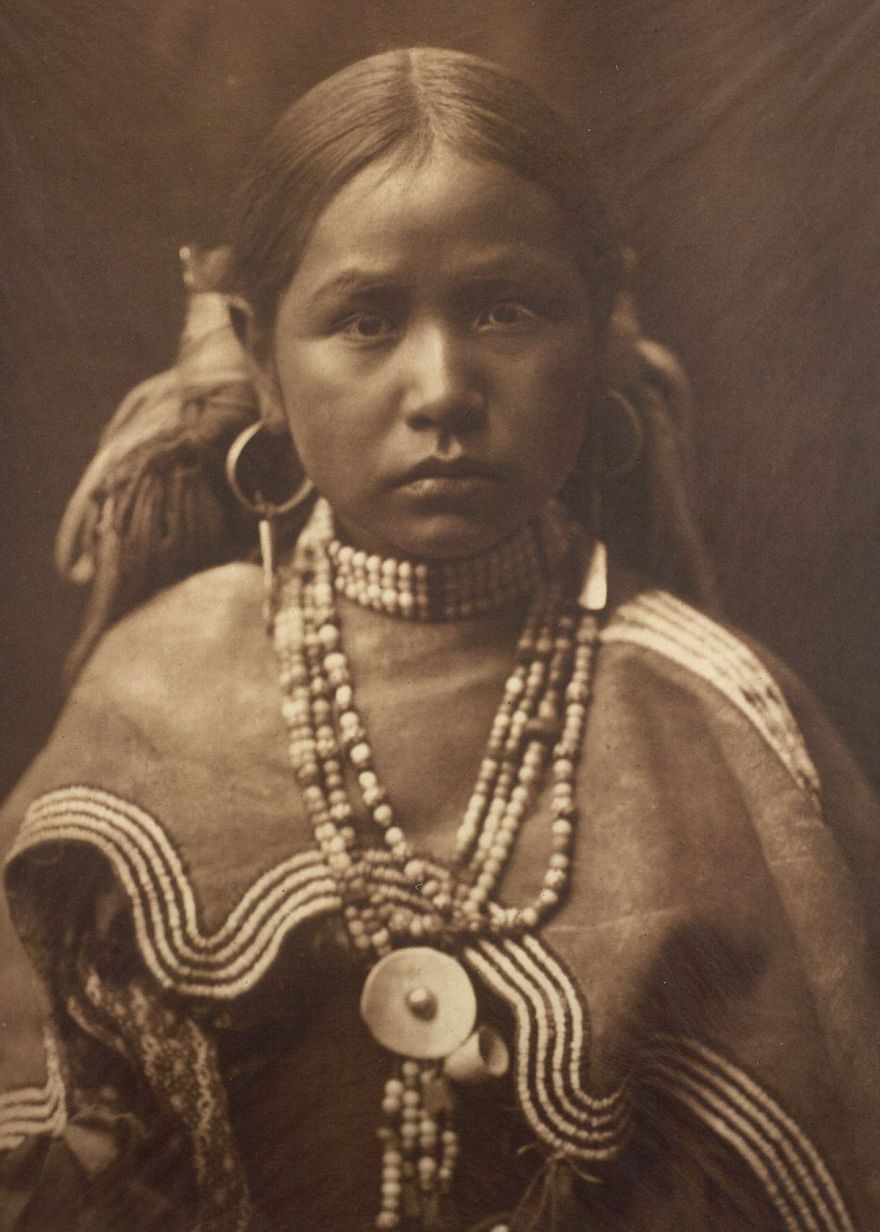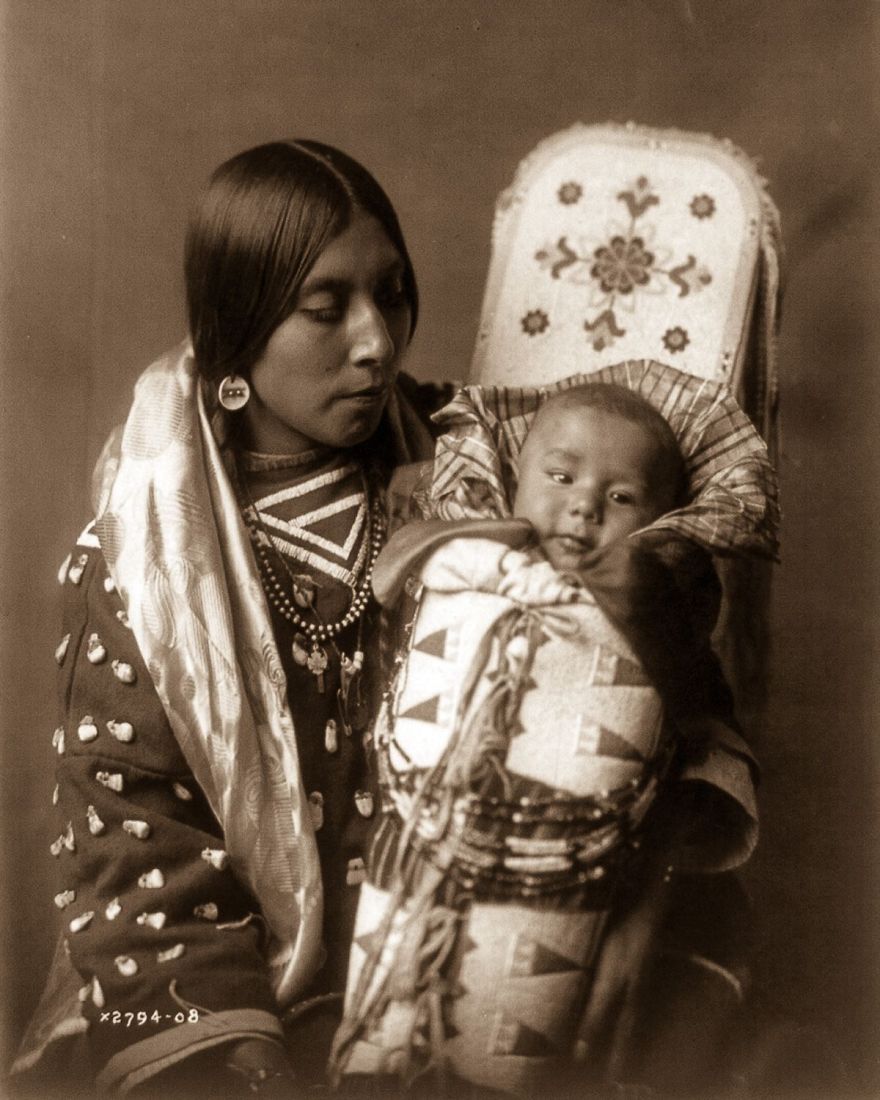Native American culture is rich with magical customs and captures the spirit of living free, but during the 20th century it was quickly vanishing. Because of this, Edward Sheriff Curtis dedicated decades of his life to capturing and recording the lifestyle of indigenous tribes in North America and his extensive work includes some of the most captivating photos from that era.
In 1906, wealthy financier and banker J.P. Morgan provided Curtis with $75,000 to produce a series on Native Americans. Together they produced a 20-volume series, called The North American Indian. Edward spent more than 20 years traveling across the continent and made over 40,000 images of over 80 tribes. He also recorded songs and language, transcribed oral stories and biographies.
Curtis' methods to record the disappearing way of life were later criticized by some anthropologists. He occasionally posed individuals from unrelated tribes in the same clothing, removed them from natural settings and used overly romantic ones, and so on. Nonetheless, his work still features a lot of authenticity and is regarded as one of the biggest Native American research.
More info: edwardcurtis.com (h/t: mashable)
This post may include affiliate links.
A Klamath Chief Stands On A Hill Above Crater Lake, Oregon, 1923
An Apsaroke Man On Horseback, 1908
Unfortunately these are staged. The chief's headdress was ceremonial and not worn for hunting. I don't believe native Americans used bridles on their horses either as they did not work steel for the bite.
A Jicarrilla Girl, C. 1910
A Group Of Navajo In The Canyon De Chelly, Arizona, 1904
I've been to Canyon de Chelly several times. The bottom floor of the canyon requires a back country permit and an authorized Navajo guide. There are roughly 40 or so families that still reside within the National Monument boundaries. Being part Indian I have been given several tours of the Navajo Nation. This photo is very indicative of how the Canyon still looks today.
An Apsaroke Mother And Child, 1908
The cradleboard can then be carried in the mother's arms, worn on her back like a backpack for travel, propped up on the ground like a baby chair, or secured to a sled for longer journeys. After horses were introduced to the Americas, cradleboards in some tribes began to be designed to hang off the side of a horse as well. Not all Native Americans used these baby carriers -- families didn't traditionally bring infants out of the village in some tribes, so they didn't need a special way to carry them.
Sioux Chiefs, 1905
As the Indian Wars became fewer and further between; and gunpowder made its' way west. The Spear (or staff) became more of a symbolic thing. However; the Spear still showed fur from the "big hunt", maybe a scalp and a feather from a lucky throw. Originally used as a thrusting weapon in hand-to-hand combat, after the introduction of horses, war lances became a prestigious weapon of mounted warriors, and took on symbolic and ceremonial importance in some tribes as well.
A Tewa Girl, 1906
This hairstyle was known as a butterfly whorl. The Tewa People mostly lived on the Arizona and New Mexico vicinity.
A Nootka Man Aims A Bow And Arrow, 1910
Black Eagle, An Assiniboin Man, 1908
Piegan Tepees, 1910
So many childhood memories coming to my mind now. I loved Karl May's books. I remember like I was imagining myself sitting next to teepee or riding horses with Winnetou...lovely times. Thanks for all these pictures they are interesting and beautiful.
Hollow Horn Bear, A Brulé Man, 1907
Mohave Woman, 1903
Apache Girl And Papoose, 1903
A Kwakiutl Wedding Party Arrives In Canoes, 1914
It is important to know the customs of the tribe to understand what exactly is going on. Very interesting boats and Indian dress for this occasion!
Nakoaktok Dancers Wear Hamatsa Masks In A Ritual, 1914
Eskadi, Of The Apache Tribe, 1903
A Kwakiutl Shaman Performs A Religious Ritual, 1914
Apache Woman, 1906
A Smoky Day At The Sugar Bowl, 1923
A Qagyuhl Man Dressed As A Bear, 1914
Walpi Maidens, 1906
A Qahatika Girl, 1907
This reminds me of the photo of the Afghan girl from Time magazine
Navajo Man, 1904
Crow Encampment With Tipis, Tents, Wagons, Horses And Men As Seen From The Distant Shore Of The River, 1908
Maricopa Child, 1907
Navajos, 1905
A Qagyuhl Woman Wears A Fringed Chilkat Blanket And A Mask Representing A Deceased Relative Who Had Been A Shaman, 1914
Piegan Girls Gather Goldenrod, 1910
A Koskimo Man Dressed As Hami ("dangerous Thing") During A Numhlim Ceremony, 1914
A Hidatsa Man With A Captured Eagle, 1908
Medicine Crow, Of The Apsaroke Tribe, 1908
everyttime i see those faces full of natural dignity and knowledge, i want to leave all the smartphone and central heating and nine-to-five b******t behind me and move into a tipi
Hakalahl, A Nakoaktok Chief, 1914
Indian Woman Holding Rushes, 1908
A Young Member Of The Apache Tribe, C. 1910
A Wishran Girl, 1910
Apsaroke Man Wearing Medicine Hawk Headdress, 1908
A Kwakiutl Man Wearing A Mask Depicting A Man Transforming Into A Loon, 1914
The Primitive Artists-paviotso, 1924
A Kwakiutl Gatherer Hunts Abalones In Washington, 1910
A Hupa Spear Fisherman Watches For Salmon, 1923
Kwakiutl People In Canoes In British Columbia, 1914
Intriguing picture. Also still kindof painfull to see such an old picture with the Natives in their land called "British" Columbia
Ron Breast, A Piegan Man, 1900
Okuwa-tsire, Also Known As "cloud Bird," Of The San Ildefonso Pueblo, 1903
A Cahuilla Woman, 1924
A Kwakiutl Chief's Daughter, 1910
Members Of The Qagyuhl Tribe Dance To Restore An Eclipsed Moon, C. 1910
Qagyuhl Dancers, 1914
Iahla, Also Known As "willow," Of The Taos Pueblo, 1905
Luzi, Of The Papago Tribe, 1907
A Kutenai Duck Hunter, 1910
Kwakiutl People In Canoes In British Columbia, 1914
An Apache Man, C. 1910
A Hupa Woman, 1923
A Mariposa Man On The Tule River Reservation, 1924
A Maricopa Woman, 1907
A Cahuilla Child, 1905
Spearing Salmon, 1923
A Qagyuhl Dancer Dressed As Paqusilahl ("man Of The Ground Embodiment"), 1914
These pictures are wonderful, but I have to say that I find your comments mostly inane.
Nayenezgani, A Navajo Man, 1904
The Hopi Maiden, 1905
A Zuni Woman, 1903
A Papago Woman, 1907
Hopi Bridal Costume, 1900
Kominaka Dancer, 1910
skulls i can vibe but he's holding a leg with a mangled foot attached ummm doc
Vash Gon, A Jicarrilla Man, C. 1910
A Maricopa Woman With Arrow-brush Stalks, 1907
Nesjaja Hatali, Navajo Medicine Man, 1904
At The Old Well Of Acoma, 1904
Two Dakota Men Playing Hand Drums Outside Of A Tipi, 1908
A Kwakiutl Shaman, 1914
A Dancer Kisses The Grandfather, 1908
An Apache Woman Reaps Grain, C. 1910
An Apsaroke Shaman, 1908
Skokomish Couple Outside House Made Of Reed Mats, One Seated Beside Canoe That Has Been Pulled Onto The Riverbank, The Other Standing Holding A Paddle, 1913
A Sioux Hunter, 1905
Group Of Arikara Women. 1908
Piegan Chiefs, 1900
Mowakiu, A Tsawatenok Man, 1914
Navajo Man Bedecked In Hemlock Boughs And Mask Of A Clown Associated With The Mischievous Rain God Tonenili, 1905
Native Hemlock - Officially called Tsuga, this is type of Conifer tree in the Pine family. Unlike poison hemlock (conium), the species of Tsuga are not poisonous. Western Hemlock, technically called west coast of North America. It was often used by area tribes as a dye, for tanning hides, making baskets and wooden items. The pitch was often applied topically as a poultice or slave for colds and to prevent sunburn. A decoction of pounded bark was also used in the treatment of hemorrhages. Another species, commonly known as Mountain Hemlock (Tsuga Mertensiana) was also used by Native Americans. The Menominee and the Forest Potawatomi used the inner bark and twigs it in a tea to relieve colds and fever. It was also used to treatflu, kidney or bladder problems, diarrhea, as a gargle for mouth and throat problems, and externally to wash sores and ulcers.
Mnainak, A Yakima Chief, 1910
A Kwakiutl Person Dressed As A Forest Spirit, Nuhlimkilaka, ("bringer Of Confusion"), 1914
Curtis made 10,000 wax cylinder recordings of Indian language and music. He described tribal population, traditional foods, dwellings, clothing, games, ceremonies, burial customs, biographical sketches and even supplied a bit of the proper clothing when his subjects had none. Such a massive project is almost incomprehensible in this day and age. Finally, in Los Angeles. On October 21, 1952 at the age of 84, E. S. Curtis died of a heart attack, and at that time was virtually unknown.
Curtis made 10,000 wax cylinder recordings of Indian language and music. He described tribal population, traditional foods, dwellings, clothing, games, ceremonies, burial customs, biographical sketches and even supplied a bit of the proper clothing when his subjects had none. Such a massive project is almost incomprehensible in this day and age. Finally, in Los Angeles. On October 21, 1952 at the age of 84, E. S. Curtis died of a heart attack, and at that time was virtually unknown.

 Dark Mode
Dark Mode 

 No fees, cancel anytime
No fees, cancel anytime 






























































































































